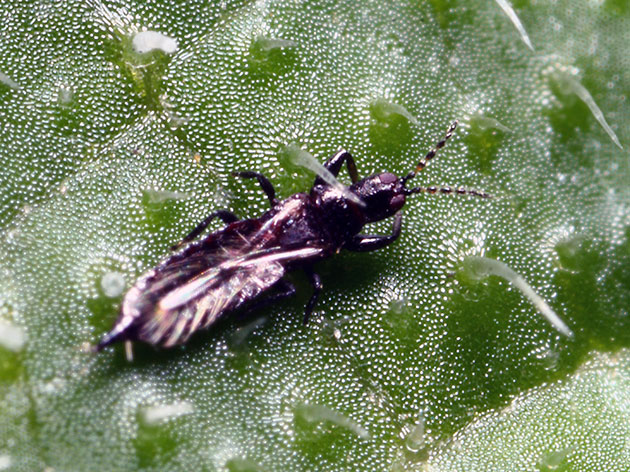 Gladioli are flowers of the bulbous family, native to Africa and the tropical Mediterranean. Create a festive atmosphere, decorate with decorative lawns and flower beds in gardens and parks. Florist collections show a fabulous variety of varieties and colors of gladiolus.
Gladioli are flowers of the bulbous family, native to Africa and the tropical Mediterranean. Create a festive atmosphere, decorate with decorative lawns and flower beds in gardens and parks. Florist collections show a fabulous variety of varieties and colors of gladiolus.
But, unfortunately, this magnificence can destroy a large army of insect pests.
Content
How to get rid of thrips on gladioli
The main pest of the flower is the herbivorous gladiolus thrips. Small oblong insect of dark color, no more than 1.5 mm long, with wings fringed on the outer edge. Propagated by larvae. It moves over considerable distances and intensively breeds in hot sunny weather, during the summer season it can delay up to 7 generations and hit an impressive territory. Pests feed on plant sap, damaging the green mass and inflorescences of gladioli, transferring various diseases and thereby causing significant damage to flower plantings.
You can determine the infection by looking at the flowers. Plants populated by the insect parasite look exhausted, the flowers discolor and dry, the buds do not bloom, and the peduncle becomes thinner and bent. In such conditions, to detect larvae and thrips, it is enough to look into the leaf sinuses or open the bud.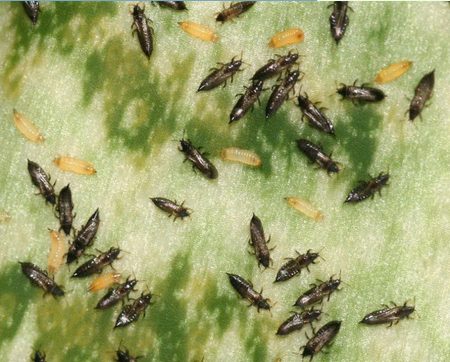
To get rid of thrips settlements, it is necessary to combat the pest by spraying with insecticidal drugs. Processing is carried out with a frequency of once every 2-3 weeks, starting before the appearance of the first peduncles and ending 2 weeks before digging up the tubers. To destroy thrips, autumn work includes the collection and burning of all plant debris, deep digging of the soil at the site of cultivation of gladioli. It is not recommended to plant flowers in the same place.
How to process gladiolus bulbs to destroy thrips
Gladioli are affected by thrips not only during the growing season, but also during storage of corms. First of all, the excavation of tubers is carried out until a steady cooling in the fall, until the insects have moved from the stem to the ground and attached to the bottom at the bulb, hiding under the scales. So, together with dug bulbs, you can bring the parasite into a storage place and infect all planting material. Wintering under the scales, thrips feed on the juice of the bulbs, which as a result become useless for planting.
When laying raw materials for winter storage, all tubers are carefully inspected, damaged tubers are discarded and destroyed. The remaining corms for prophylaxis against parasites are placed for 30-40 minutes in a solution of the insecticidal-acaricidal preparation Karbofos (40g per 10 l of water). Then the tubers are rinsed with clean water and dried well. And only then can you put the raw materials in the refrigerator. Permissible storage temperature is 5-7 C.
A preventive measure for getting rid of thrips is to hold the tubers for 5 minutes in 50 C. Then dry thoroughly. The temperature regime must be strictly observed so as not to “weld” the planting material.
If there is no confidence in the complete destruction of insects, then you can still treat the bulbs with an aerosol from insects (for example, "Dichlorvos").Tubers are placed in a plastic bag, sprayed into it and left for 30 to 60 minutes, tightly tied.
In the spring, before planting, the corms must again be sorted and etched for prevention. Etching the roots with the biological drug Fitosporin-K will help protect gladioli from bacterial diseases.
Drugs against thrips
In the fight against gladiolus thrips, chemical preparations are used aimed at the complete destruction of a wide range of pests, their eggs and larvae. Such pesticides have proven themselves well: Karate, Karbofos, Confidor, Inta-Vir, Fitoform, Actelik. The most effective drug today is Decis.
To avoid the stable addiction of thrips to insecticides, they need to be alternated. Particularly effective spraying in the early morning in warm, calm weather. On cool cloudy days, the benefits of this treatment are minimal, because thrips does not appear on the surface of the leaves.
Other processing methods
In addition to industrial insecticides, plant compounds that are no less effective and absolutely safe for humans and the environment are used to treat gladioli and its bulbs from thrips.
- Before planting the tubers, you can withstand 2-3 hours in the juice of garlic.
- In a container with tubers a piece of cloth is placed, abundantly moistened with alcohol, and hermetically closed for several hours. From a lack of oxygen, thrips get out from under the integument flakes and die.
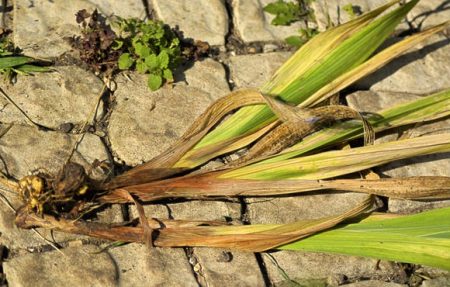
- Spraying plants with infusions of tobacco dust and shag.
Performing simple agricultural techniques and methods of combating harmful insects, you can grow beautiful, gladioli pleasing to the eye.
Reviews
Faced with such misfortune as thrips. Unfortunately, none of the listed folk remedies helped, but the smell of garlic stood in my nose for a long time. But the processing of flowers by Decis was effective, the result was visible after the first spraying. I agree 100% that today it is the best insect repellent.



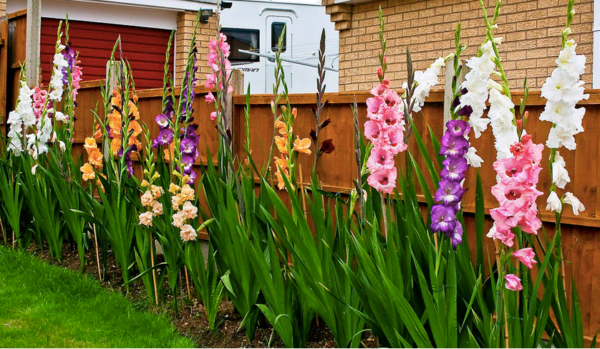
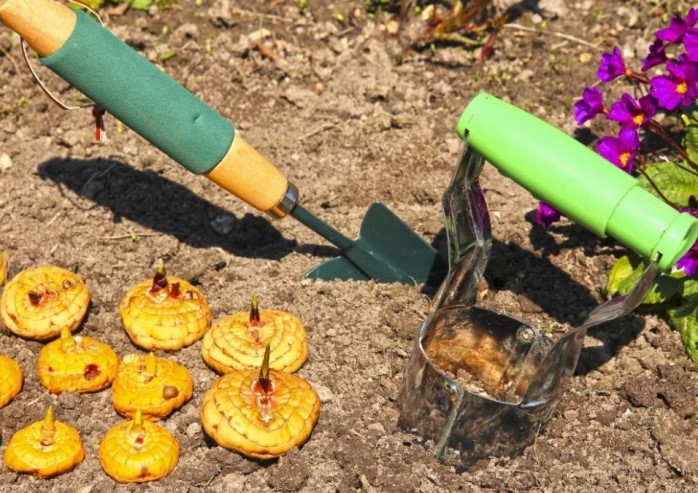 When and how to plant gladioli in spring in open ground
When and how to plant gladioli in spring in open ground Gladioli: landing and care in the open ground
Gladioli: landing and care in the open ground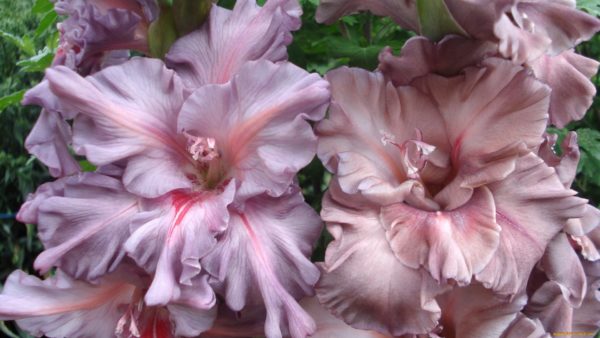 Children of gladioli: what to do with them
Children of gladioli: what to do with them